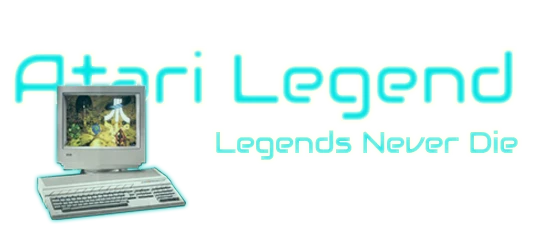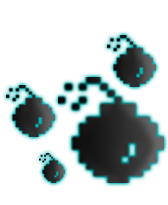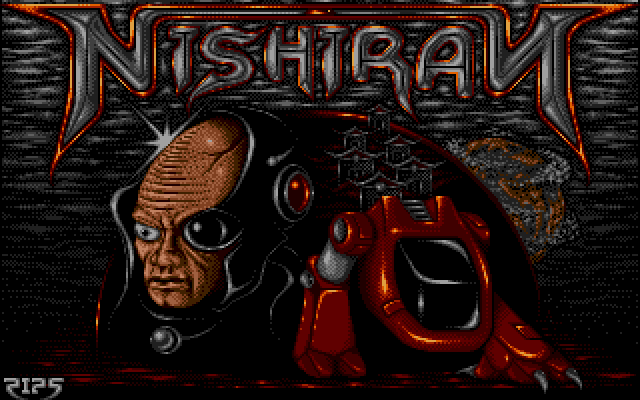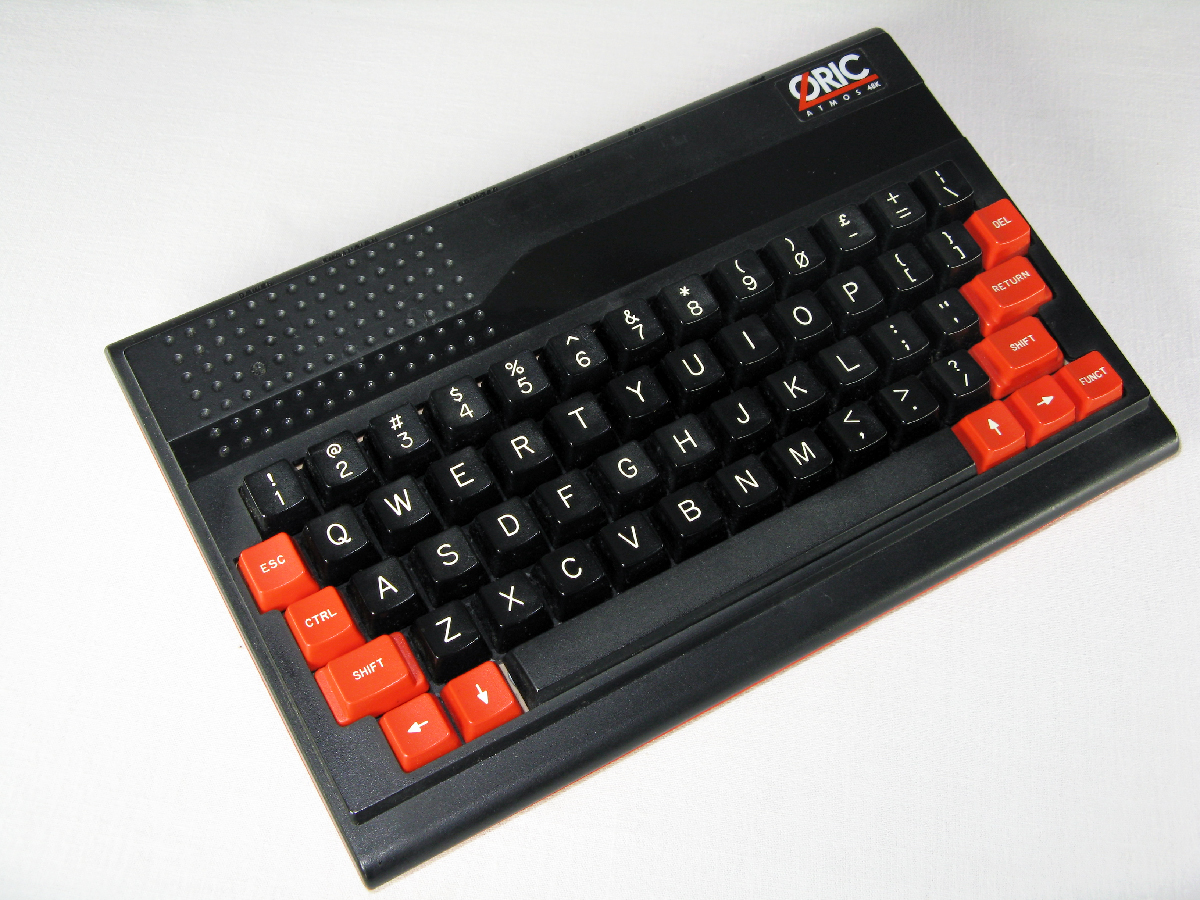







In the 80s, France produced a huge number of games for the Atari ST, some pretty mediocre, others very successful. Eric Safar's games belong to the second category. Eric participated in titles such as Ranx or Les Portes du Temps on the Atari, before going to Cryo to work on MegaRace... But he's also the author of an adventure game that became a real hit: Atlantis. Today, Eric is still passionate and continues to develop games for our old machines. After releasing Athanor 1 a few years ago for 8 bit machines, he is about to release Athanor 2 on the Atari ST. Let's give him the chance to tell us his story in great detail. Be ready for one of the most captivating interviews on this site!
There is currently no profile available in our database
1) The obligatory introduction.
2) Laser 200: The computer that started everything.
3) Then came the Oric Atmos
4) To code or to play, that is the question
5) Discovering the Atari ST
6) Being recruited at a game publisher
7) Who was behind Legend Software?
8) Ninjanimal, the game that never was
9) Working on an adaptation of a comic book
10) Some instructions from the editor?
11) Favorite ST games
12) Moments in love (with Atari)
13) How working in a shop led to Cryo.
14) The Cryo and Atlantis era
15) Leaving the company where the best memories were born
16) Eric's favorite
17) Back in the 8 and 16 bits scenes
18) Athanor 2: differences between the CPC and ST versions
19) Tools used to develop Athanor 2
20) Brilliant game, but also brilliant graphics
21) Game available in French or English?
22) Dma-Sc joined the project and will release the ST tracks
23) What about a port of Athanor 1 to 16 bit machines?
24) Physical clues? Why?
25) So the ST version will have clues too?
26) After Athanor 2, there will be more than a sequel
27) Athanor 3 will also be released on Atari
28) Speaking of Eric's other obsession
29) Last words

Nishiran, one of the aborted projects by Legend Software, was finalized years later by the demomakers of DNT Crew

The Oric Atmos is one of the first computers Eric owned. He paid homage to it by developing Athanor 1 for it
1) Hi Eric, thank you very much for your willingness to do this interview. Can you introduce yourself in a few words to those who do not know you yet?
Thank you for asking me, it's always a pleasure to chat with Atari ST fans!
Eric SAFAR, author / coder of video games for as long as I can remember and collector of old computers.
2) When and how did you start your adventure in the world of computers? What was your first machine?
I started in the mid 80s with a Laser 200! The shock was instant despite the very limited capabilities of this beautiful machine.
3) How did you begin coding? What was the first software or video game you coded?
After the first steps in Basic on my Laser 200, I quickly bought an Oric Atmos. I began to study the code more seriously. I started In Basic and very quickly learned Assembler on the 6502 processor. It was quite a discovery because I instantly felt the power of this low level language.
4) Were you a big gamer at the time?
I was on the Oric. I played a lot of games ... and not only original copies ![]()
After all these years, I think I dare to admit that.
I spent endless hours in a dark storeroom playing mostly adventure games! Le manoir du Dr Génius, Le mystère de Kikekankoi, Erebus, L'aigle d'or, Le diamant de l'île maudite … OK ... The list goes on and on, but I will stop now ![]()
5) When and how did you discover the Atari ST?
It was in 1987 (If memory serves me well). I had a summer job and spent all the earnings on an ST! My parents also helped a bit on the financial side so I could buy it all. It was completely insane to me: Floppy drive, TOS in ROM, crazy graphics. I think it was a review in Tilt , where The Pawn was shown. I drooled seeing the screenshots of the game.
6) You worked on the Atari ST for Legend Software on 89 La Révolution and Les Portes du Temps. How did you get in?
After showing some sketches of games at Loriciels, FIL and ]Microïds, I was actually recruited at Legend Sofware in 1989.
I showed the few things I coded on the ST. My passion convinced Legend Software immediately. I went to Rennes (French town in Brittany) where my new life began.
I actually participated in the game Les Portes du Temps and then Ranx, which was being developed by Ubi Soft, so I worked on those before putting myself on 89 La Révolution Française. This last game was released on the MSX2 and we did the conversions for the Atari, Amiga and PC.
7) Legend Software remains a rather mysterious publisher nowadays. Can you tell us a bit more about it? Have you kept in touch with its management or the other employees of the company?
I have some fond memories of Legend Software. It was my first "Pro" job in the video game industry and the atmosphere was really "old-fashioned".
We often worked very late, as the internal team was very limited. Olivier Morazé was the screenwriter and salesman, Nicolas Gohin, was a really talented Amiga programmer, Didier Quentin was the graphic designer, Franck Quéro was the coder on the PC and I did everything on the Atari ST!
Some other coders joined us temporarily for support on certain titles.
Legend Software's flagship title remains "The Doors of Time", which was a hit for fans of adventure games.
The 3 founders of Legend Software already made some games like Skyx or La Chose de Grotemburg, both on the Amstrad CPC.
8) You started working on Ninjanimal, which was supposed to be created by Legend Software, too. It seemed very promising but suddenly everything stopped. What happened?
Yes, we were working on this beautiful project that was Ninjanimal, but the company was suffering financial difficulties. Despite the advance of a demo sent to various publishers, we had to stop the production. Titus (if I remember correctly) was very interested!
I found some parts of the code of the game, but we'll talk about that later ![]()
Also, there was another very promising title: Nishiran!
9) You also worked for Ubi Soft on the game Ranx, an adaptation of the famous comics RanXerox. Did you leave Legend at the time?
Yes, indeed, I helped out on Ranx but it was within Legend Software. Since we had a good relationship with Ubi Soft, they asked us to work on the final part of the development of this game, because there were some troubles with the original developer.
That's how I ended up on Ranx. I remember one of the Guillemot brothers (founders of UBI Soft) occasionally paying a visit to the office of Legend Software.
10) How was it working on this game? What difficulties did you encounter and did you receive instructions from Albin Michel, the editor of the comic book?
It was necessary for me to intervene on this project which had already started by others and this is always a very delicate matter ... but that is about the only thing I can remember.
11) Let's go back to the Atari ST. What are the games that have left its mark on you?
Once again, I got a lot of fun on some adventure games. The Magnetic Scroll games were a visual shock at the time (The Pawn and The Guild of Thieves).
Also the first digitisations were amazing and I remember liking it a lot. For instance, I looped the Starglider intro over and over.
I remember anxiously awaiting the release of Dungeon Master and ... it did not disappoint, it was a masterpiece. This game was and still is incredible.
12) What are the most precious memories you have of the Atari ST?
Actually, I'm still creating memories with the Atari ST because I work on it (almost) every day now. ![]()
But I remember the Atari ST as a sensational machine, with programming languages that became very professional. C, GFA, and the 68000 obviously.
I loved programming the 6502. But the 68000 is the real treat.
13) In 1992, you were hired by Cryo. What did you do in the meantime?
When I left Legend Software, I started military service (which makes me feel really old just thinking of it ;-) )
During this period I (almost) started a small company for computerised sports events, all done with my ATARI ST! I did some events actually, but it did not last long!
Afterwards I found a job in Paris in the 11th arrondissement working in a computer store.
It was fun for about a year. By chance, it was at this job where I met Eric Chahi and his team, they had started working on Heart of Darkness! And they were looking for some good PCs! ![]()
14) How did you get hired at Cryo? And by who? And what games did you work on at that time?
I have a lot to tell about this period, are you ready for this? ![]()
At a party in 1992 (Golden Tilt or Gen d'Or, I can't remember), I met Philippe Ulrich, who was thinking of hiring new recruits as CRYO was on the rise. So, I had an appointment with Remi Herbulot in the Paris office at Bourse metro.
I was completely psyched to meet Remi Herbulot as he was one of my idols! The meeting went well. He asked me to write a palette compression routine because they were doing PC VGA game conversions to the SEGA MEGA CD.
I showed him a result a fortnight later and I was hired. CRYO was still looking for a setting so he asked me to work at home for a month or two till the a new office was finally opened in Paris 18th, Rue Marc Seguin.
I worked with Patrick Dublanchet who finished Dune on the Mega CD while I took care of the game MegaRace.
I met some great people at CRYO. I breathed video games in every square metre of the company. ![]() I’ve spent 10 years overthere and they surely were the 10 most beautiful years of my professional life.
I’ve spent 10 years overthere and they surely were the 10 most beautiful years of my professional life.
After MegaRace, which I finished up in San Francisco (for Mindscape), I started working on a PC-based arcade game from a Dark Horse licence that Cryo had just bought: VIRUS!
It was for a big American company named BETSON, but in the end, I think the arcade cabinet never made it.
CRYO then shapeshifted from a developer to a publisher. This was an incredible evolution.
The releases were incredibly succesfull and I was lucky when Remi entrusted me with a very big production that was about to start: ATLANTIS - Secrets of a forgotten world. I didn’t know exactly what adventure I was going to do but it was insane!
When Atlantis started, it was a big bet for CRYO. The investments were important, we felt there was a big risk but once again, the team was crazy. The graphic designers were among the best in the market at the time. The illustrators at CRYO were also crazy talented : Thomas Boulard and Angel Bautista (the others will forgive me for not quoting them) did a great job.
Remi Herbulot, his wife Danièle and Johan Robson created an unfogettable moment in video game history.
The development lasted 18 months. The last 4 were extremely intense but the result was worth it.
I am very proud to have participated in this saga. In the end, there were 3 other Atlantis game released.
15) When did you leave Cryo, and what did you do next?
In the summer of 2003, after 10 beautiful years of pure video game bliss, CRYO was bought by DreamCatcher. But the company only wanted the publishing department, without the development studio. So I offered Dreamcatcher to continue the current episode of Atlantis Evolution by creating a small external structure to the company. And I founded, together with François Brun, the Atlantis Interactive studio.
We finished Atlantis Evolution for Dreamcatcher. Then, I made a final opus with Nobilis, a publisher from Lyon, here in France. Secrets of Atlantis was released in 2006/2007.
16) In retrospect, which project you participated in are you most proud of?
I think my previous answer is pretty clear. Obviously the episodes of ATLANTIS brought me the most pleasure in my professional carreer! It was difficult, but some members of the team became true friends with whom I remain close even today.
Also the years before Cryo at Legend Software were amazing.
17) Let's talk about your current work. You are currently developing Athanor 2 for the Atari ST and Amiga. Can you summarize the game in a few lines? What is it and what is the plot?
A few years ago, I wanted to hook up my old machines. Eventually I thought, “why not get back into the conditions of the era of Legend Software and redo a game?”
Athanor 2 - The Legend of the Birdmen is the second opus of a trilogy. It's a pure old-fashioned point & click game in the tradition of Explora (aka Chrono Quest) for example.
The game takes place on three main locations : the city of Knossos, the Indus Valley and Easter Island!
The end of Athanor 1 - Awakening has revealed important information. In the current game, the player goes on an adventure. He arrives at Knossos and must find a mysterious character…
18) Since this game has already been released on Amstrad, what are the main differences on the Atari and Amiga?
The gameplay has been completely revised since the 8-bit versions of Athanor 1 and 2 are based on a parser.
On the Atari and Amiga, everything is working with the mouse and the management of the objects is completely 'point & click'.
The inventory is now graphically presented. And we have digitised sound effects.
It was necessary to remodel some puzzles, but the story and actual game remains the same. That's what we wanted: it's a conversion while exploiting the new capabilities of 16/32 bit machines.
19) What tools did you use to develop this game on the Atari ST?
I developed an editor in GFA Basic. So, I left the engine of the game in GFA compiled. Some routines are in Assembler 68000 (Devpac 3) when it could not be done using GFA. The Amiga version is in C.
20) Can you tell us a little more about the beautiful graphics in this game? How and by whom were they created? Does the game exploit the STE palette?
All illustrations created for Athanor 2 are the work of Angel Bautista. We worked together at Cryo and have been friends ever since. Angel is now living in Portugal but he works quickly and he has a lot of talent.
Then, François Gutherz converted the actual drawings of Angel in 16 or 32 colour versions. It's a huge job but François has production methods allowing him to obtain very good results for both machines.
Indeed, the STe palette will be used.
21) In which languages will the game be available?
The game will be available in French and English at the least.
The Spanish and German versions are possible but maybe we will reserve them for the next title...
22) And regarding music, what can you tell about the Atari ST version?
Hervé Monchatre, the musician who composed the magnificent music of Athanor 1 and Athanor 2 on Amstrad CPC, is actually joined by Dma-Sc (Mathieu Stempell) for Atari STe music.
Mathieu is an immense 'connoisseur' and lover of the Atari ST. He is currently working on new songs.
So, new tracks are planned for the Atari version!
23) You released the first Athanor on different 8-bit machines (Amstrad, Oric and C64), but not on 16-bit computers. Do you think we can play volume 2 without having played volume 1? Is a version of Athanor 1 on 16-bit possible?
Yes, that’s true: the first Athanor is only available on the 8 bits. This is a deliberate choice because the initial idea with Athanor 1 was a tribute to the first generation of adventure games with wireframe graphics.
This kind of game would not have worked out well on our 16/32 bit machines because technically they can do much better. So I have doubts about a version of the the first opus on the Atari ST and Amiga.
We have spoken about an idea we had with François Gutherz regarding the possibility of making quick conversions, but for the moment it remains wishful thinking.
24) You love to slip physical clues into your games. Where does this passion come from?
That is true! This concept was mostly used in some adventure games from Cobra Soft in the 80s and I loved it at the time. I also wanted to pay tribute to this long lost art.
But my main interest with adding physical items is to expand the story of the game this way. Not just the inclusion of goodies to make the package look "pretty".
I will continue in this direction and the next title will go a step further with even more immersion.
25) So, will there be many physical clues in the Atari ST version of Athanor 2?
Of course! And there will even be an ST specific extra added!
26) Finally, do you have any idea of a release date for Athanor 2? Will both Atari ST and Amiga versions be released simultaniously?
I aim for the end of the year, I'm hoping that finishing up the game doesn't take much more time. And there is also a chance that the Atari version will be available before the Amiga version comes out. With François, we are left a little bit in the dark.
27) Can you already confirm that you’ll also release Athanor 3? If so, on which machines?
Absolutely. Athanor 3 will be developed from the ground up on the Atari and Amiga and there won't be an 8 bit version anymore.
But ...there is always is a but ... After the release of Athanor 2 on Atari / Amiga (Christmas 2019), we will be working on yet another title! It will be planned between the release of Athanor 2 and Athanor 3.
I will share some details if you promise it stays between us? ;-) The game design of a new adventure is ready!
It will be developed specifically for the Atari and Amiga and it is gonna be big, a SF thriller to be a little more precise. 4 disks of code, graphics and digitised sound! There will also be a version for the Amstrad CPC, we owe that to the community. And with this title, there will be some big surprises as well, but I'll talk about it a little later. ![]()
The code name of the game is: SOLARA!
28) Thank you for this exclusive information. We can’t wait to learn more. Also, you collect games and old machines. Can you show us a bit of your collection? What do you particularly like?
Hula! I did not think I had to talk about my other addiction. My collection… So yes, I mostly collect 80/90 computers and I have about 150 machines. How I feel about each machine varies a great deal. I have a weakness for the Oric, because I learned a lot on this computer and its 6502. I also like my Milan because it's a rare piece from Atari!
And then there are some other rarities that I have because when I flipped through the magazines of the time (Tilt, Hebdogiciel or Micro News) they made me dream: a Dai from Indata, an MTX512, an Atom from Acorn or a Tavernier, for instance.
As for games, I mainly keep some adventure games but we can’t do everything, so I stay focused on computers.
29) A very big thank you for your availability and if you have one last word to add, do not hesitate.
No, a big thank you for your interest in our games! It's awesome to meet people who also love the best computer on the planet! ;-)
Please log in to add your own comment to this interview
August 5, 2025 by grams88
Martin Brownlow is a living legend. Best known among ST fans for creating the beloved PD/shareware classics Grav and Grav 2, his games are still cherished by many to this day. From a young age, Martin knew he wanted to make games for a living...and he made that dream a reality. In fact, he’s still doing it today. Discover the full story and much more in this exciting new interview.
October 4, 2024 by grams88
Stacey Jamieson began his career at DMA Design, working on titles such as Oh No! More Lemmings, Walker, GTA and others. Over the years, he moved on to Electronic Arts (EA), where he contributed to major games like the Star Wars Battlefront series, Mass Effect, and Need for Speed. Today, he is the co-founder of Expression Games, where he continues to pursue his passion for game development. What an exciting career!
July 29, 2024 by grams88
Who doesn't love a good underdog story? Chris Sharp is a noteworthy apprentice of the renowned François Lionet, as he mastered the art of coding with the almighty STOS Basic. Chris crafted a few games for our cherished ST, including fan favourites like Magic Tomb and the Freaked Out series. Intrigued? Dive into our interview to revisit the era when game development could still be a solo endeavour.
July 16, 2024 by grams88
When Sega released its Master System, it came bundled with the game Alex Kid. To this day the game remains very popular, loved by many. One of those people is Terry Lloyd. More so, Alex Kid was the main inspiration for the Atari ST platform classic Axel's Magic Hammer. But that is just one of his many accomplishments. Terry has been around the block. Working as an artist and game designer at the beginning of the 80's for Gremlin Graphics, he then moved on to Core Design, which he helped get off the ground. During the 90's he contributed to founding the company Malibu Interactive. On the Atari ST, Terry's resumé include Dynamite Dux, Car-Vup, Rick Dangerous 1 & 2, Torvak the Warrior, WarZone and many more. Read all about this veteran of the games industry in this exciting interview.
April 18, 2024 by grams88
It doesn't always have to be about computers, coding and graphics. Adrian Powell, the artist behind the original Lemmings game, crafted all its artwork, including box art and promotional materials. His passion for painting lemmings has persisted over time and he is still painting lemmings to this day. Powell's work remains influential and has helped selling millions of copies of this classic (ST) game.
Currently 0 registered users online
In the past 24h there were 2 registered users online